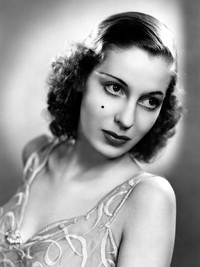Valerie Hobson

This pretty daughter of a British army officer became an elegant leading lady of British film in the 1930s and 40s. Shortly after enrolling at RADA at age 16, Valerie Hobson was cast in her first film the inferior "Eyes of Fate" (1933). The following year, she headed to Hollywood and Universal where she was wasted in several pictures, often as a terror-stricken victim. One highlight of her days in L.A., though, was as Colin Clive's wife in James Whale's "The Bride of Frankenstein" (1935). Hobson also was cast as the exotic Helena Landless in the fair screen version of "The Mystery of Edwin Drood" (also 1935). Returning to England, the actress found roles of more variety and soon became one of the most versatile and popular performers. Hobson delivered a stylish portrayal as the wisecracking, crime-solving wife of a reporter in "This Man Is News" (1938), a sort of British "Thin Man." She followed with a handful of spy thrillers, including two with Conrad Veidt, "The Spy in Black/U-Boat 29" (1939) and "Contraband/Blackout" (1940). Her postwar career yielded her best role, though. In David Lean's 1946 rendering of "Great Expectations," Hobson was stunning as the adult Estella. She also was impressive as one of the two women romanced by Dennis Price in "Kind Hearts and Coronets" (1949). After the dissolution of her marriage to producer Anthony Havelock-Allan in 1952, Hobson only appeared in two more films before retiring at the age of 37 following her marriage to British politician John Profumo. When a sex scandal involving her husband made headlines in the early 1960s, she remained steadfastly by his side. In the 1989 film "Scandal," which dramatized the events of the 60s, Hobson was portrayed on screen by actress Deborah Grant.